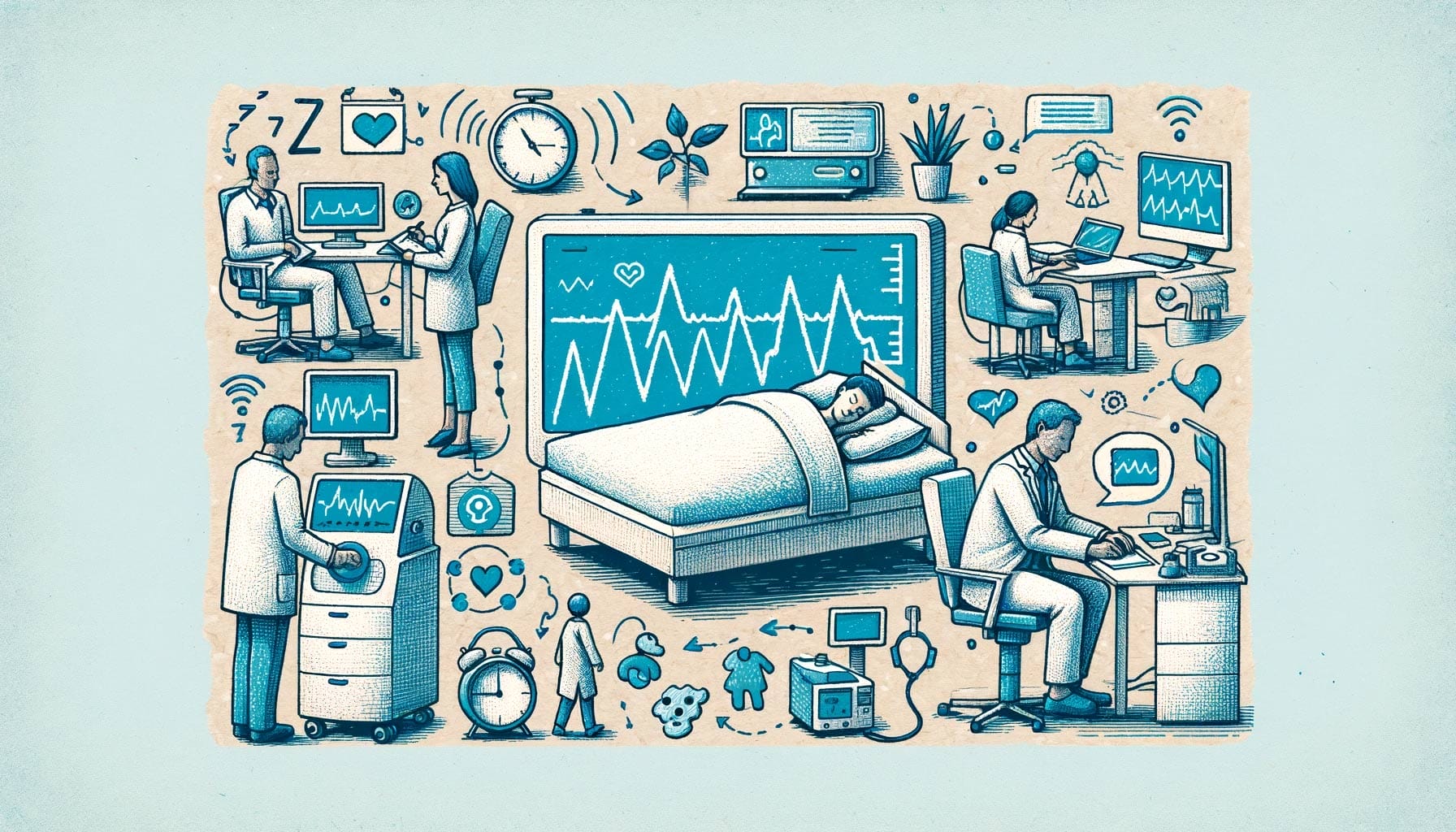Introduction
In the evolving landscape of sleep research, the focus on sleep disordered breathing (SDB) has intensified, driven by its significant impact on public health. The development of multifunctional monitors represents a pivotal advancement in the study of SDB, offering researchers the tools needed to capture a more comprehensive understanding of this complex condition. This article delves into the capabilities of these advanced devices, with a special emphasis on the Fibion Vitals monitor, illustrating how its integration into research projects is enriching data collection and analysis.
“The precision and versatility of multifunctional monitors are setting new standards in sleep disordered breathing research.”
By offering detailed insights into the physiological parameters involved in SDB, these devices not only enhance diagnostic accuracy but also open new avenues for exploring treatment outcomes and disease management strategies.
Understanding Sleep Disordered Breathing
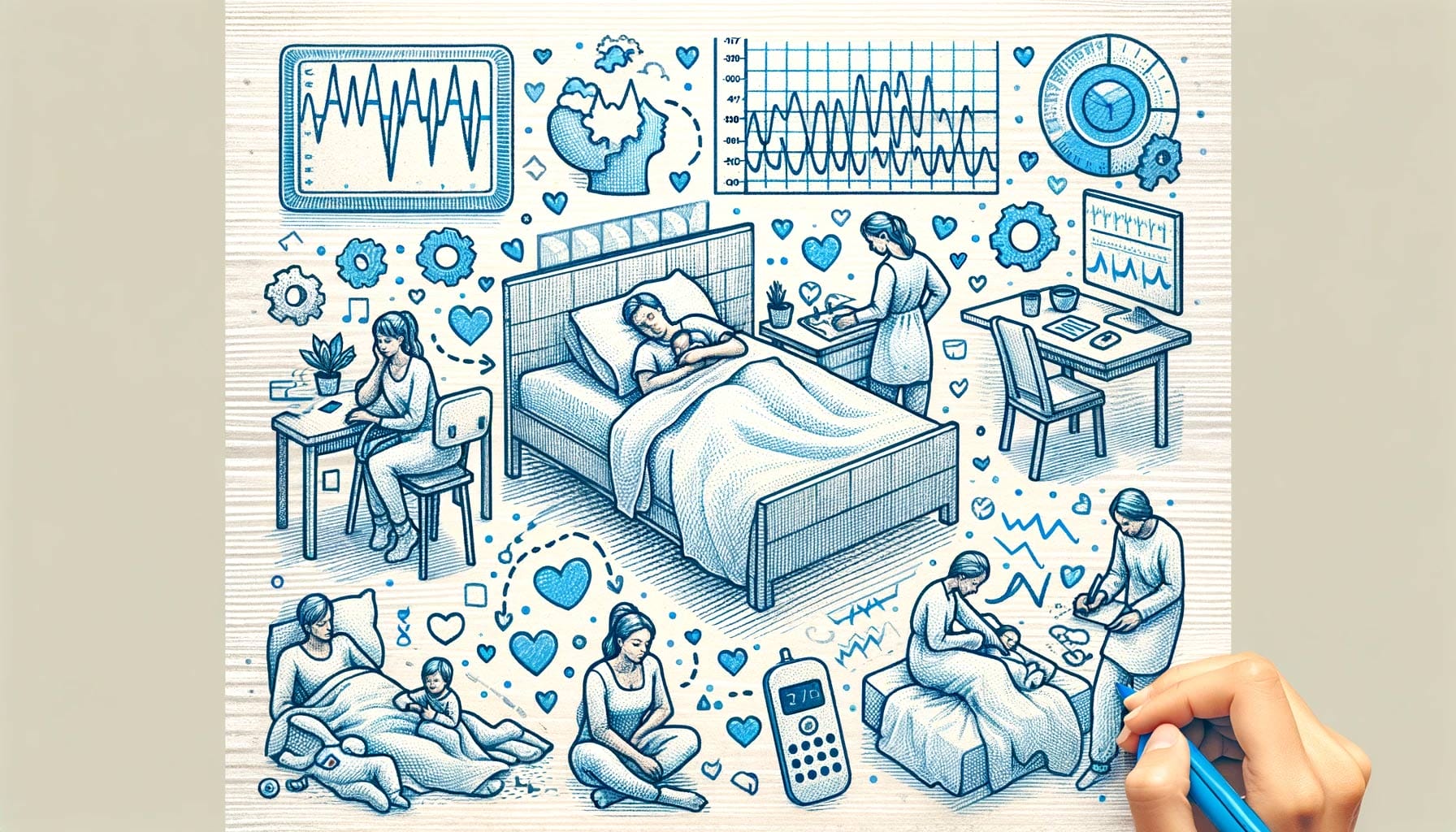
Sleep disordered breathing encompasses a spectrum of conditions characterized by abnormal respiratory patterns during sleep. These conditions, ranging from the relatively mild snoring to more severe forms such as obstructive sleep apnea (OSA), pose significant risks to health and well-being. The accurate diagnosis and study of SDB require advanced monitoring technologies capable of capturing the multifaceted nature of these disorders.
Types of Sleep Disordered Breathing:
- Snoring: Often considered a precursor or symptom of more severe conditions.
- Obstructive Sleep Apnea (OSA): Characterized by repeated episodes of partial or complete upper airway obstruction during sleep.
- Central Sleep Apnea (CSA): Involves a lack of respiratory effort during sleep due to neurological factors.
- Complex Sleep Apnea: A combination of OSA and CSA, presenting unique challenges for diagnosis and treatment.
The Significance of Accurate Monitoring:
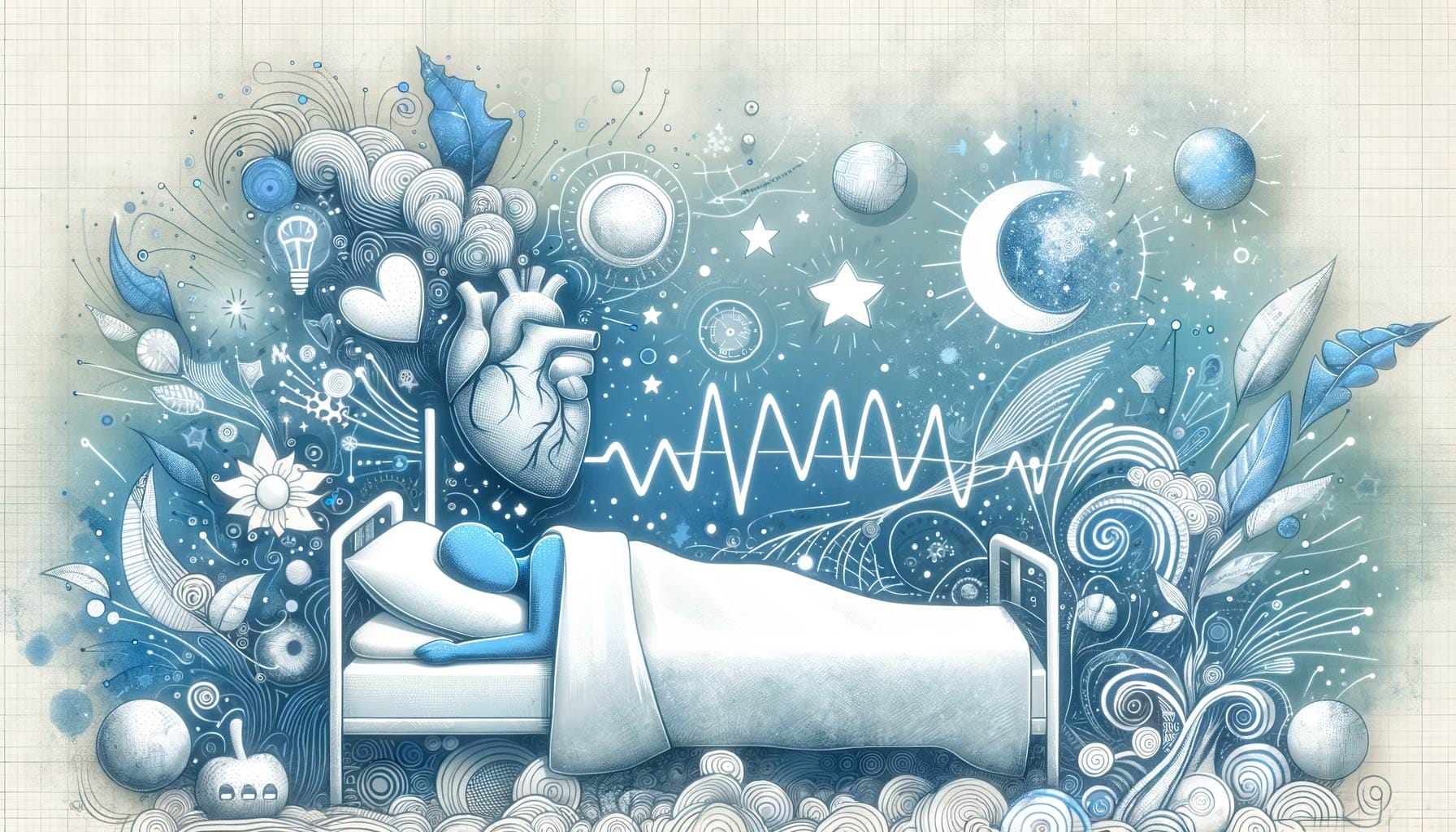
Accurate monitoring is crucial for:
- Diagnosis: Differentiating between types of SDB and determining severity.
- Treatment Monitoring: Assessing the effectiveness of interventions.
- Research: Advancing our understanding of SDB’s impact on health.
Current Challenges in SDB Research:
- Participant Comfort: Ensuring devices do not disrupt natural sleep patterns.
- Data Complexity: Managing and analyzing the vast amounts of data collected.
- Technological Limitations: Overcoming constraints of older monitoring systems.
“Accurate and comprehensive monitoring is the cornerstone of advancing sleep disordered breathing research.”
Understanding the complexity of SDB and the importance of detailed monitoring sets the stage for appreciating the value multifunctional monitors bring to the field. As technology progresses, so too does our capacity to explore the intricacies of sleep and its disorders, paving the way for innovative treatments and improved patient outcomes.
The Evolution of Sleep Disordered Breathing Monitors
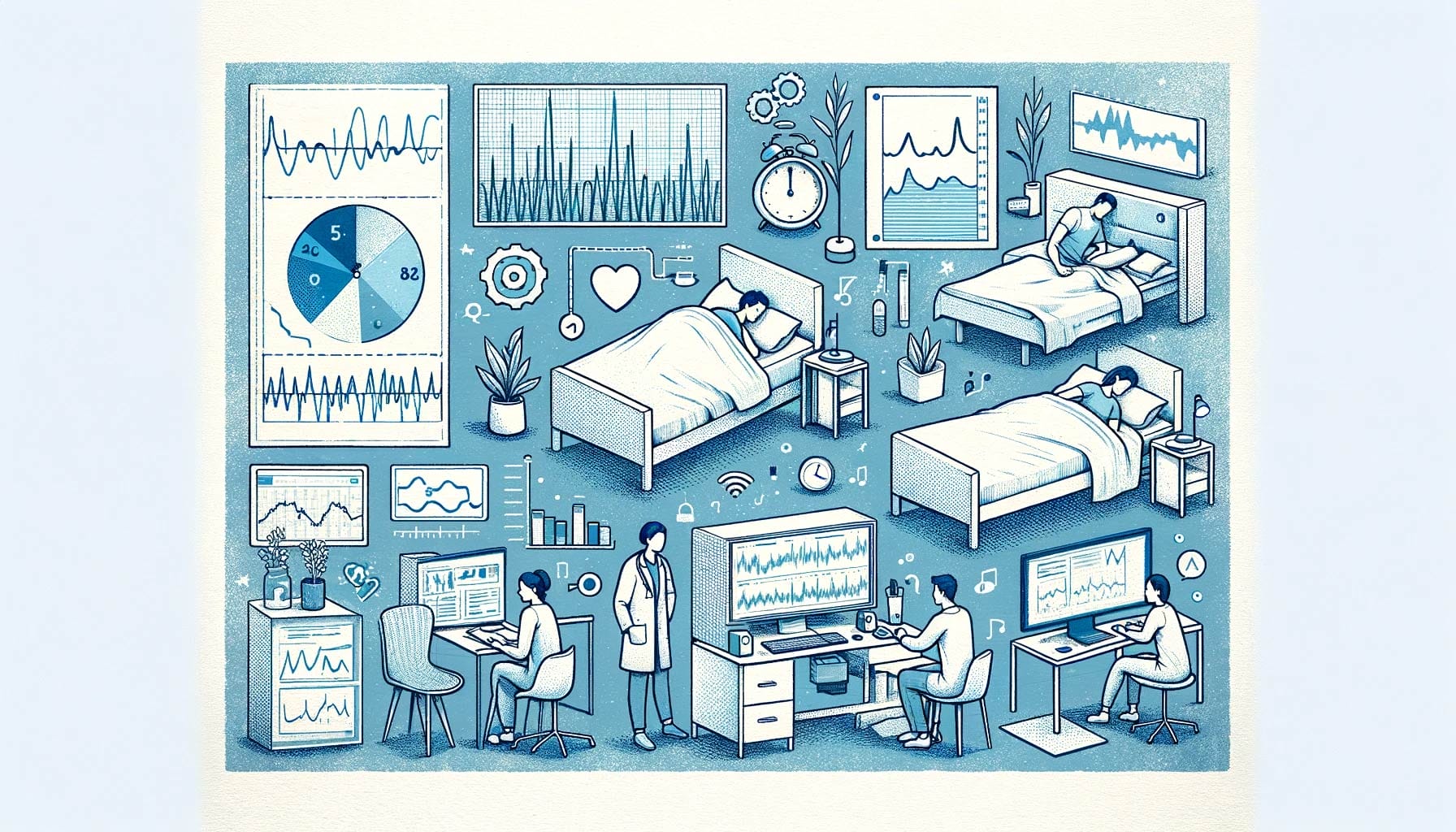
The journey of sleep disordered breathing (SDB) monitors from simple observational tools to sophisticated, multifunctional devices reflects the technological advancements in medical research. Initially, the study of SDB relied heavily on subjective assessments and basic monitoring equipment, which provided limited insights into the complex nature of sleep and its disorders.
From Observation to Innovation:
- Early Stages: Reliance on patient reports and basic physiological measurements.
- Introduction of Polysomnography (PSG): A significant leap, allowing for the simultaneous recording of multiple physiological parameters during sleep.
- Limitations: Traditional PSG setups were cumbersome, limiting studies to controlled environments and potentially disrupting natural sleep patterns.
The shift towards multifunctional monitors has addressed many of these limitations, offering a seamless integration of various measurement technologies into a single, user-friendly device.
“The evolution from bulky, intrusive systems to sleek, multifunctional monitors marks a significant milestone in SDB research.”
This transition has not only enhanced the accuracy of SDB diagnosis but has also broadened the scope of research possibilities, facilitating studies in more naturalistic sleep settings.
Key Features of Multifunctional SDB Monitors
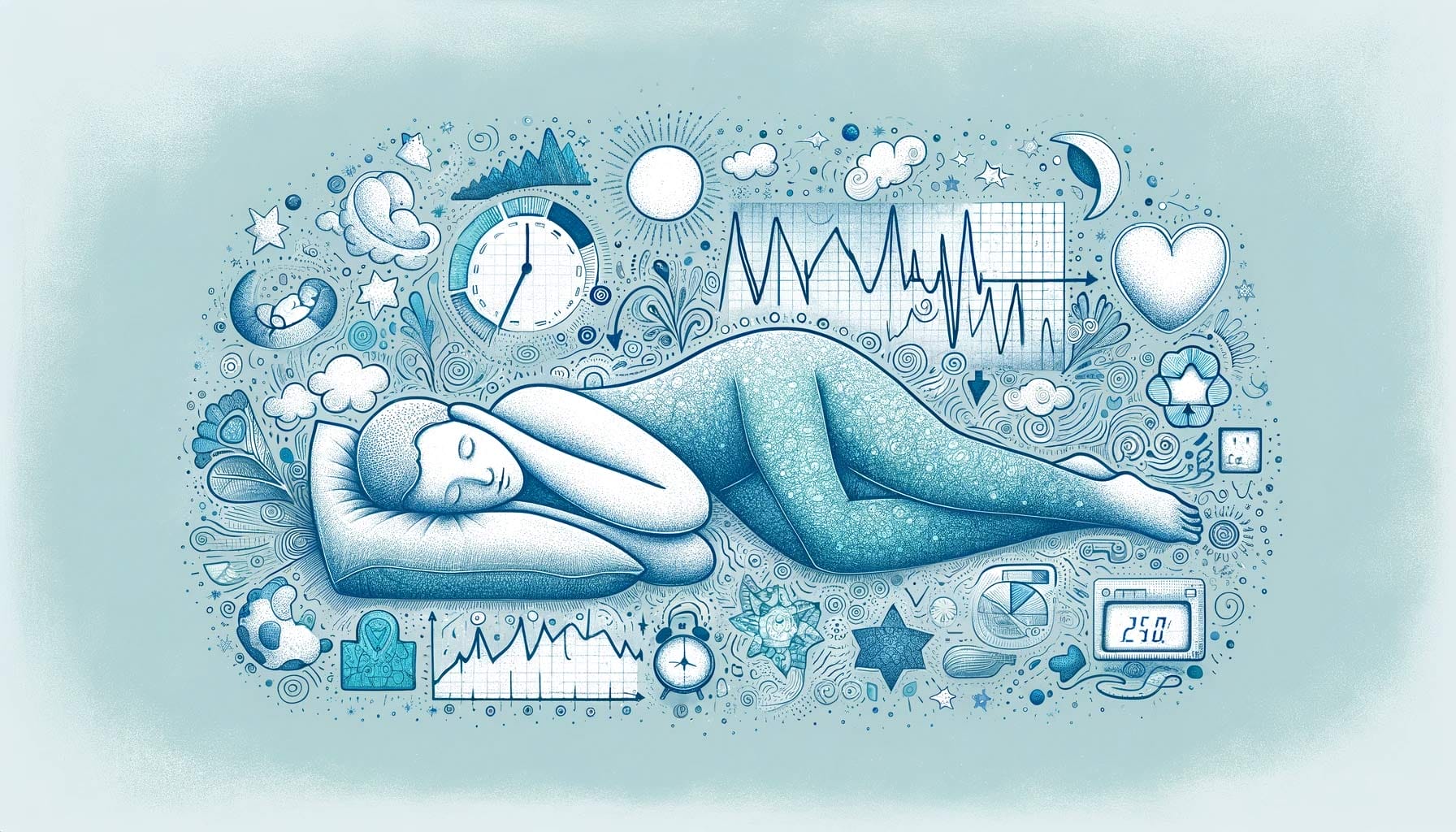
Multifunctional SDB monitors represent the forefront of sleep research technology, integrating various diagnostic tools into a single, compact device. These monitors are designed to provide a comprehensive overview of the patient’s physiological state during sleep, offering invaluable data for both clinical diagnosis and research purposes.
Comprehensive Data Collection:

Multifunctional monitors combine several features for better measurements:
- Respiratory Patterns: Through advanced sensors, these devices can accurately track breathing irregularities, aiding in the identification of apnea episodes.
- Cardiac Monitoring: Heart rate and variability are crucial for understanding the cardiovascular implications of SDB.
- Movement Detection: Incorporating motion sensors to assess sleep quality and detect disturbances.
- The use of wireless technology ensures that data is transmitted in real time, allowing for immediate analysis and feedback. This feature is particularly beneficial in long-term monitoring and intervention studies.
- Emphasizing comfort and ease of use, these devices are designed to be as non-intrusive as possible, ensuring that natural sleep patterns are minimally disrupted.
“The integration of diverse measurement capabilities into multifunctional SDB monitors significantly enhances our understanding of sleep physiology.”
By offering detailed insights across multiple physiological domains, multifunctional SDB monitors like Fibion Vitals are setting new standards in the field, enabling researchers and clinicians to approach sleep disordered breathing with an unprecedented level of precision and insight.
Fibion Vitals: A Case Study in Multifunctional Monitoring

The Fibion Vitals device exemplifies the latest advancements in multifunctional sleep disordered breathing (SDB) monitors. Designed to meet the rigorous demands of modern sleep research, Fibion Vitals integrates a range of diagnostic features into a single, streamlined device, setting a new benchmark for efficiency and effectiveness in the study of sleep disorders.
Unique Features of Fibion Vitals:
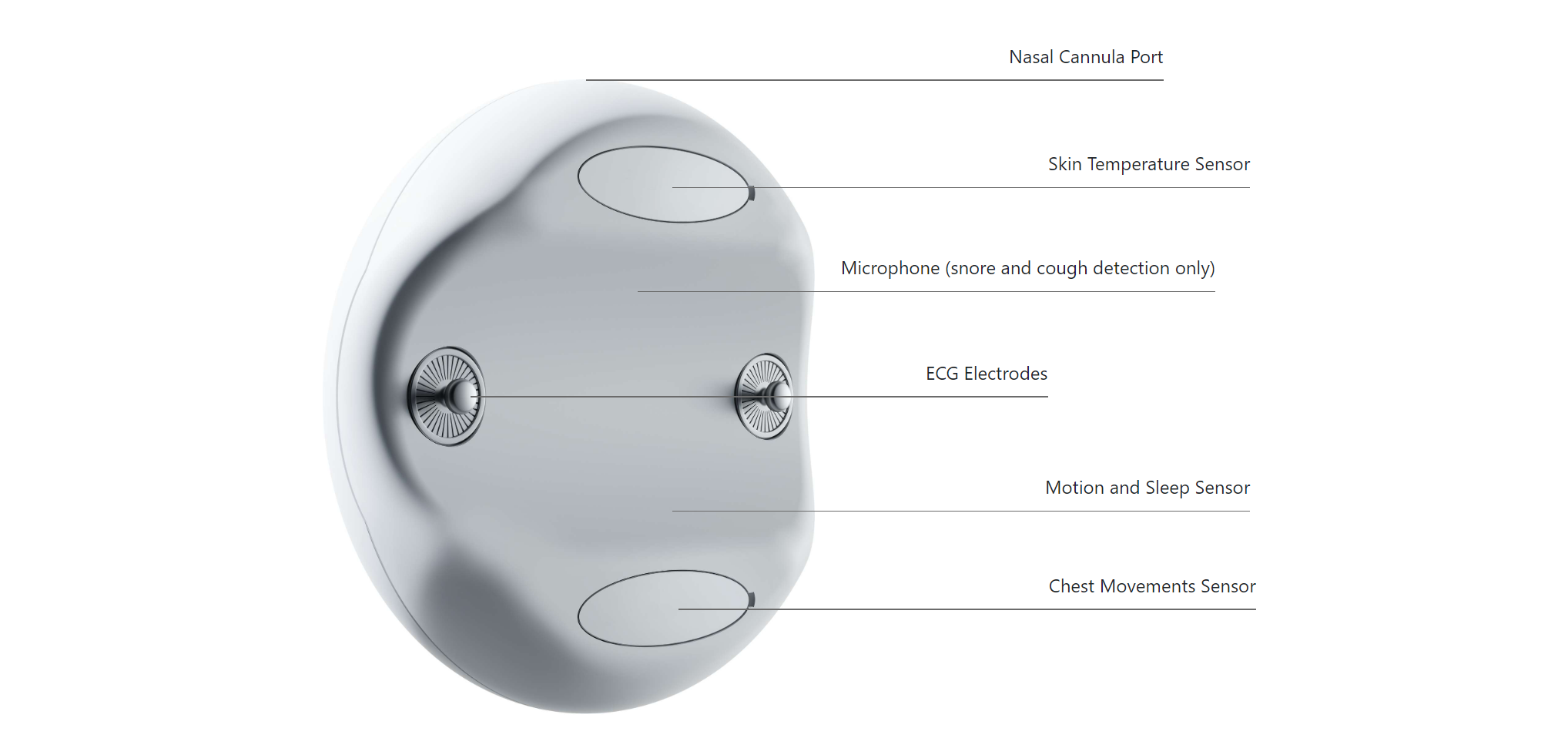
Fibion Vitals stands out for its comprehensive approach to sleep monitoring, incorporating several key technologies:
- Nine-Axis Motion Sensor: Provides detailed data on patient movement and sleep positions.
- Impedance Measurement for Respiratory Analysis: Offers precise measurement of respiration patterns, crucial for identifying SDB episodes.
- Temperature Sensor, Heart Rate, and Heart Rate Variability Monitoring: These features contribute to a holistic view of the sleeper’s physiological state.
- Single Lead ECG: Enhances cardiac monitoring capabilities.
- Nasal Airflow Measurement: Integrated with a nasal cannula, this feature is vital for assessing breathing irregularities.
The combination of these features into a single device underscores Fibion Vitals’s role in advancing sleep research technology.
“Fibion Vitals integrates multiple diagnostic technologies, offering a comprehensive tool for the study of sleep disordered breathing.”
By providing researchers with detailed, multi-dimensional data, Fibion Vitals facilitates a deeper understanding of SDB, its impact on health, and the effectiveness of treatment interventions.
Implementing Fibion Vitals in Sleep Research

The application of Fibion Vitals in sleep research highlights its potential to transform the field. Its ease of use, combined with the breadth of data it provides, makes it an invaluable tool for both clinical and academic studies. Researchers can deploy Fibion Vitals in a variety of settings, from laboratory-based polysomnography to home sleep tests, expanding the reach and relevance of their work.
Benefits for Research and Diagnosis:
- Enhanced Data Quality: The comprehensive data collected by Fibion Vitals supports nuanced analysis and interpretation.
- Improved Participant Experience: The non-intrusive design of Fibion Vitals ensures higher compliance and more natural sleep conditions.
- Versatility: Suitable for a wide range of research applications, from detailed physiological studies to broader epidemiological surveys.
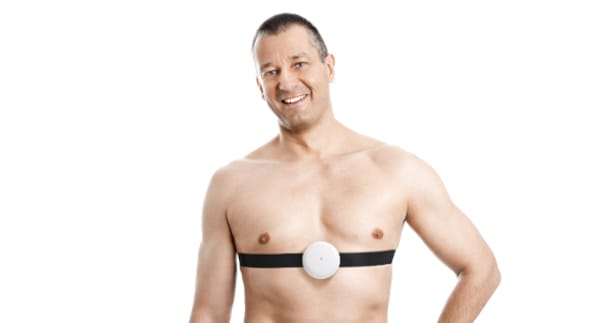
The adoption of Fibion Vitals in sleep studies exemplifies the device’s adaptability and effectiveness, offering researchers the tools needed to explore the complexities of sleep disordered breathing with unprecedented depth.
“The versatility and ease of use of Fibion Vitals make it a preferred choice for cutting-edge sleep disordered breathing research.”
Fibion Vitals not only enriches the data available to researchers but also enhances the overall quality and impact of sleep studies, paving the way for new discoveries and advancements in the treatment of sleep disorders.
Conclusion

In the ever-advancing landscape of sleep disordered breathing research, multifunctional monitors have emerged as pivotal tools for unraveling the complexities of these conditions. The integration of diverse diagnostic technologies into a single device, exemplified by Fibion Vitals, has not only streamlined data collection but has also broadened the horizons of sleep research.
“Multifunctional monitors like Fibion Vitals are reshaping the way we approach sleep disordered breathing research.”
By providing researchers with comprehensive, real-time data in an unobtrusive manner, these devices have unlocked new avenues for exploration and discovery. As we journey into the future, the synergy between technology and sleep research promises a deeper understanding of sleep disordered breathing and, ultimately, a brighter outlook for those affected by these conditions.
Remember to reach out for more information on Fibion Vitals and explore the possibilities it offers for your research projects.
Call to Action
Explore the possibilities of advancing your sleep disordered breathing research with Fibion Vitals:
- Learn More about Fibion Vitals: Dive deeper into the capabilities of Fibion Vitals by visiting our Fibion Vitals product page. Discover how it can elevate your research and clinical studies.
- Book a Consultation with Our Experts: Have specific questions or need guidance on implementing Fibion Vitals in your research? Schedule a consultation with our sleep measurement expert here. They will tailor a solution to meet your unique research needs.
- Access Our Sleep Research Resources: Expand your knowledge with our collection of articles on sleep research, monitoring technologies, and health. Whether you’re an experienced researcher or new to the field, our resources offer valuable insights. Access the collection here.
Embrace the future of sleep disordered breathing research today with Fibion Vitals and unlock the potential for groundbreaking discoveries and advancements in patient care.
Frequently Asked Questions
How do multifunctional monitors transform research in sleep disordered breathing? +
By providing comprehensive data on physiological parameters, multifunctional monitors significantly improve the precision in diagnosing and treating sleep disordered breathing, enriching the field with deeper insights.
What is the significance of precise monitoring in the study of sleep disordered breathing? +
Precise monitoring is vital for accurately identifying SDB types, evaluating the efficacy of treatments, and deepening our understanding of SDB’s health implications.
How has the technology behind sleep disordered breathing monitors improved? +
Technological advancements have transformed SDB monitors from basic tools to advanced, multifunctional devices, increasing diagnostic precision and expanding research capabilities.
What distinguishes multifunctional SDB monitors? +
These monitors are distinguished by their ability to collect extensive data, support wireless connectivity and real-time data sharing, and are designed to minimize sleep interference for users.
Why is Fibion Vitals considered a breakthrough in SDB monitoring? +
Fibion Vitals is recognized for its unique approach of amalgamating various advanced technologies into one device, providing a holistic, multi-faceted view of sleep disordered breathing.
What are the anticipated future developments in SDB research using multifunctional monitors? +
Expected future developments include leveraging machine learning for improved data interpretation, enhancing user engagement, and extending the monitors’ applicability in various healthcare environments.

